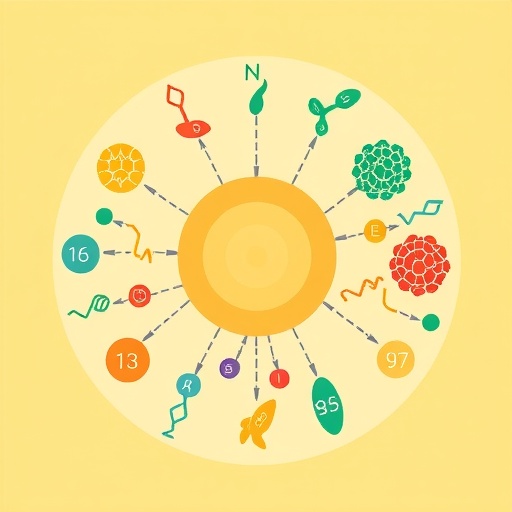In recent years, the alarming trend of magnet ingestion among children has captured the attention of both pediatricians and researchers alike. The attraction that magnets hold for young children is undeniable, with their shiny surfaces and the ability to connect and disconnect in fascinating ways, yet this innocent curiosity can lead to dire health implications. The ingestion of multiple magnets poses serious risks, including bowel perforation, obstruction, and other severe gastrointestinal complications. A progressive phenomenon in pediatric emergencies, multiple magnet ingestion has necessitated the development of predictive tools to aid physicians in managing and reducing the associated risks.
Researchers have identified that conventional treatment methods for magnet ingestion may not suffice, particularly in cases where more than one magnet is swallowed. Traditional guidelines often overlook specific risk factors and fail to provide a comprehensive clinical framework for assessing outcomes. In light of these challenges, a multi-disciplinary team of experts has embarked on a groundbreaking study aimed at creating and validating nomograms to predict complications arising from pediatric multiple magnet ingestion. This novel approach combines both radiologic and clinical data to enhance patient care and clinical decision-making.
The study, led by experts in pediatric gastroenterology and radiology, utilized a large retrospective cohort to develop these predictive nomograms. By examining the medical records of children who had ingested multiple magnets over a significant period, the team identified key variables that influence clinical outcomes. Their findings serve as a roadmap, guiding healthcare providers through the complex decision-making process that often accompanies these cases. What sets this study apart is its focus on creating a user-friendly tool that practitioners can implement in real-time scenarios.
Central to their research was the evaluation of various clinical indicators, which included age, the number of magnets ingested, and presenting symptoms. These parameters were meticulously analyzed through extensive statistical methodologies, allowing researchers to generate algorithms capable of predicting adverse outcomes. For parents and guardians, this means an increased awareness and education concerning the risks associated with magnet ingestion, enabling them to make informed decisions should an incident occur.
Moreover, the integration of radiologic data into these nomograms represents a significant advancement in pediatric care. Radiological imaging plays a critical role in the management of ingested foreign bodies, and its combination with clinical data allows for a more nuanced understanding of the potential consequences. This hybrid model could potentially streamline the process, leading to faster diagnoses and more targeted interventions that could save lives.
As the healthcare community grapples with the implications of the study, there is a growing acknowledgment of the need to educate parents on the dangers posed by magnets. With the rise in popularity of magnet toys, especially those marketed to adolescents, the researchers emphasize the importance of parental guidance and vigilance. Educating families on safe play practices could significantly reduce the incidence of magnet ingestion and ultimately safeguard children from unintended harm.
The validation of these nomograms will pave the way for further research into pediatric ingestive behaviors and the risks associated with various types of foreign bodies. With the backing of continued investigations, there is a hopeful outlook that such predictive tools can become standard practice in emergency departments across the country. Researchers are already envisioning the next stages of this project, which may include adapting the nomograms for various demographics or exploring additional predictive factors.
As awareness grows, healthcare professionals express optimism that the study’s findings will lead to improved outcomes for children facing the perils of magnet ingestion. The collaboration between specialists underscores the importance of a multi-faceted approach to pediatric health challenges. It also highlights the remarkable capabilities of modern research methodologies in addressing complex medical issues.
In conclusion, the study on predicting complications from pediatric multiple magnet ingestion reflects a vital stride forward in pediatric healthcare. The development and validation of radiologic and clinical-radiologic nomograms stand to transform the management of such cases, potentially reducing the risk of severe complications. As researchers continue to refine these methodologies and disseminate their findings, the hope is that greater awareness and preventive measures will emerge, promoting a safer environment for children.
This recent advancement in pediatric health is not only a testament to scientific progress but also an essential reminder of the vigilance needed in safeguarding our children. As the community continues to engage with these findings, the objective remains clear: to protect children from the unseen dangers that lie within their playful curiosity.
Subject of Research: Pediatric multiple magnet ingestion and its complications.
Article Title: Prediction of complications from pediatric multiple magnet ingestion: development and validation of radiologic and clinical-radiologic nomograms in a large retrospective study.
Article References:
Lai, X., Luo, Y., Teng, S. et al. Prediction of complications from pediatric multiple magnet ingestion: development and validation of radiologic and clinical-radiologic nomograms in a large retrospective study.
BMC Pediatr 25, 932 (2025). https://doi.org/10.1186/s12887-025-06302-3
Image Credits: AI Generated
DOI: https://doi.org/10.1186/s12887-025-06302-3
Keywords: Pediatric, magnet ingestion, complications, nomograms, radiology, clinical data, emergency care, healthcare education.
Tags: bowel perforation from magnet ingestionclinical decision-making in magnet ingestion casescomplications from magnet ingestion in childrengastrointestinal risks of multiple magnet ingestionmanaging risks of magnet ingestion in childrenmulti-disciplinary approach to pediatric healthnomograms for assessing magnet ingestion outcomespediatric gastroenterology researchpediatric magnet ingestionpredictive tools in pediatric emergenciesradiologic assessment of magnet ingestiontreatment challenges for magnet ingestion





